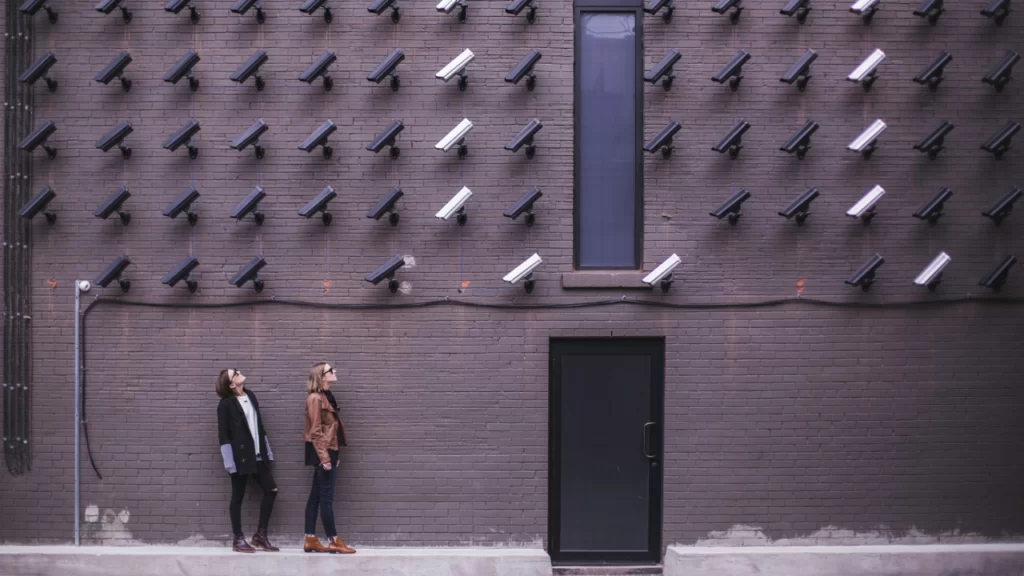CCTV cameras, you know, those closed-circuit television cameras, are used all over the place for security and surveillance. You can find them in homes, businesses, public spaces, and even government facilities. There are different CCTV camera types, each with its own purpose.
Let’s take a look at the various types of CCTV cameras you can find on the market.

Different CCTV camera types
Dome Cameras:
First up, we have dome cameras. These bad boys are super popular. They’re shaped like domes and can be easily installed on ceilings or walls. Dome cameras give you a 360-degree view and are tamper-proof, which makes them perfect for indoor surveillance.
Bullet Cameras:
Then there are bullet cameras. These ones are long and cylindrical, and they’re usually used for outdoor surveillance. They can handle tough weather conditions and provide a long-range view. People often use bullet cameras to keep an eye on things like perimeter fences and entry gates that need constant surveillance.
PTZ Cameras:
Ever heard of PTZ cameras? They’re pretty cool. PTZ stands for pan-tilt-zoom, and these cameras can be controlled remotely. You can move them around, tilt them, and zoom in on specific areas. They’re commonly used in big outdoor spaces like parking lots, stadiums, and airports where you need to cover a lot of ground.

Miniature Cameras:
Now, let’s talk about miniature cameras, also known as spy cameras. These sneaky little things are small and discreet, and you can easily hide them in everyday objects like clocks, pens, or smoke detectors.
They’re great for keeping an eye on things in homes, offices, and retail stores, especially when you want to monitor employee behavior or prevent theft.
Infrared Cameras:
If you’re dealing with low-light or complete darkness, infrared cameras are the way to go. They use infrared technology to capture images in those conditions.
You’ll often find them in outdoor surveillance systems, monitoring areas like perimeter fences and entry gates that need 24-hour surveillance. They’re perfect when you don’t have much lighting or when it keeps changing.
Thermal Cameras:
Thermal cameras are something you’d see in industrial and military settings. They detect movement using heat signatures, so they’re great at spotting intruders in the dark. They’re not affected by weather conditions either.
These cameras are handy for monitoring large outdoor areas and catching those sneaky intruders who are hard to see with regular CCTV cameras.

Day/Night Cameras:
Day/night cameras are designed to work in both bright daylight and low-light conditions. They’re often used outdoors where the lighting can change quickly.
Compared to standard CCTV cameras, day/night cameras give you better image quality. They’re a solid choice when you need to see the details, like in retail stores or banks.
360-Degree Cameras:
If you want a complete view of an area, check out 360-degree cameras, also known as fisheye cameras. They use wide-angle lenses to cover a lot of ground, perfect for places like lobbies or open-plan offices. With just one camera, you can keep an eye on a big area.
Vehicle Cameras:
Vehicle cameras are designed to be mounted on vehicles such as cars, buses, or trucks. They are commonly used for fleet management or to monitor driving behavior. Vehicle cameras provide valuable footage that can be used to improve driver safety and reduce accidents.
ANPR CCTV cameras:
And there’s a special kind of CCTV camera called ANPR cameras. ANPR stands for Automatic Number Plate Recognition. These cameras are all about capturing and recognizing license plates on vehicles.
They use fancy image recognition tech to identify and record license plate numbers in real-time. You’ll see them in traffic management, law enforcement, and parking enforcement applications.
ANPR cameras can be installed in fixed locations, such as overhead gantries on highways or on poles at the entrance to a parking lot. They can also be mounted on mobile devices, such as police vehicles, to provide real-time tracking of vehicles.
High-Definition Cameras:
Lastly, we have high-definition (HD) cameras. These cameras capture images at a higher resolution compared to standard-definition cameras. The result? Better image quality. They’re perfect for situations where you need to see the details clearly, such as in retail stores or banks.
With HD cameras, you can identify individuals and capture clear images of any incidents that happen within the surveillance area.

In conclusion
To sum it all up, CCTV cameras are a crucial tool for maintaining security and surveillance. The type of camera you choose depends on your specific needs and the requirements of your facility.
Whether you opt for the popular dome cameras, bullet cameras for the outdoors, advanced PTZ cameras, infrared cameras for low-light conditions, thermal cameras for detecting intruders, or any of the other options available, there’s a CCTV camera out there to meet your requirements.
So, keep an eye out for the right CCTV camera types to ensure the safety and security of your surroundings. Happy monitoring!


